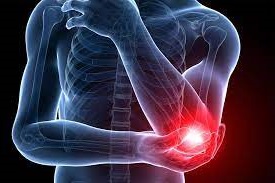Golfer’s elbow recovery time, a condition characterized by pain and inflammation on the inside of the elbow, also known as medial epicondylitis.

Where the tendons of the forearm muscles attach to bony prominences. Despite its name, golfer’s elbow is not exclusive to golfers and can affect anyone who performs repetitive arm, wrist, or finger motions.
Understanding the recovery time for golfer’s elbow involves considering various factors such as the severity of the condition, the individual’s overall health, and the treatment methods used.
Causes and Symptoms
Golfer’s elbow is often caused by overuse or repetitive stress, which leads to tiny tears in the tendons that attach the forearm muscles to the elbow. Actions that can contribute to this golfer’s elbow recovery timecondition include:
- Sports: Golf, baseball, tennis, and other activities that involve repetitive arm movements.
- Occupational Tasks: Painting, carpentry, typing, and any job requiring repetitive gripping or wrist motions.
- Hobbies: Gardening, knitting, or playing musical instruments.
Common symptoms of golfer’s elbow include:
- Elbow pain and tenderness on inner side.
- Stiffness in the elbow.
- Weakness in the hands and wrists.
- Numbness or tingling that can radiate to the fingers.
Golfer’s Elbow Recovery Time Activity
Diagnosis
Diagnosing golfer’s elbow typically involves a physical examination by a healthcare provider.
They may ask about the patient’s activities, symptom onset, and perform specific maneuvers to assess pain and tenderness in the elbow. Imaging tests, such as X-rays or MRI, may be used to rule out other conditions.
Read more: Understanding kinesio tape golfer’s elbow
Treatment Options
The treatment of golfer’s elbow aims to reduce pain, promote healing, and restore function. The following are common treatment approaches:
- Rest and activity modification: Avoiding activities that aggravate symptoms is very important . This allows the tendons to heal and prevents further damage.
- Ice and Heat Therapy: Applying ice packs can reduce inflammation and pain. Heat therapy can help to relax and loosen tissues and stimulate blood flow to the area.
- Pain Relief Medications: Over-the-counter pain relievers like ibuprofen or acetaminophen can help manage pain and reduce inflammation.
- Physical Therapy: A physical therapist can design a program of stretching and strengthening exercises tailored to the individual’s needs. These exercises aim to improve flexibility and strength in the forearm and wrist muscles.
- Bracing: Wearing a brace or splint can help reduce strain on the affected tendons and support the elbow during activities.
- Injections: In some cases, corticosteroid injections may be administered to reduce severe inflammation. Platelet-rich plasma (PRP) injections are another option that can promote healing in chronic cases.
- Surgical Intervention: Surgery is rarely needed but may be considered for severe cases that do not respond to conservative treatments. The procedure golfer’s elbow recovery time typically golfer’s elbow recovery time involves removing the damaged tendon tissue.
Recovery Time
The recovery time for golfer’s elbow varies widely based on several factors:
- Severity of Condition: Mild cases may resolve within a few weeks with appropriate rest and treatment, while more severe cases can take several months.
- Individual Health: An individual’s overall health and age can affect healing times. Younger and healthier individuals may recover more quickly.
- Adherence to Treatment: Following the prescribed treatment plan diligently can significantly impact recovery time. This includes consistent use of ice, compliance with physical therapy exercises, and avoiding activities that strain the elbow.
- Early Intervention: Prompt treatment can prevent the condition from worsening and shorten recovery time. Ignoring symptoms and continuing aggravating activities can lead to prolonged recovery.
Read more: Womens Casual Golf Attire
Tips for a Speedy Recovery
- Stay Patient and Persistent: Recovery can be gradual. It is important to stay patient and follow through with the treatment plan even if progress seems slow.
- Gradual Return to Activity: When pain subsides, gradually reintroduce activities to avoid re-injury. Start with low-intensity tasks and slowly increase the intensity.
- Strengthening Exercises: Incorporate forearm strengthening exercises into your routine to prevent future injuries. Focus on both the flexor and extensor muscles of the forearm.
- Ergonomic Adjustments: Ensure that your work and recreational activities are ergonomically sound. Adjust tools and equipment to minimize strain on the elbow.
- Healthy Lifestyle: Maintaining a healthy diet, staying hydrated, and getting adequate rest can support overall healing.
Conclusion
Golfer’s elbow can be a frustrating condition, but with the right treatment and management golfer’s elbow recovery time strategies, most individuals can achieve a full recovery.
Understanding the factors that influence recovery time and adhering to a comprehensive treatment plan are key to regaining strength and function in the affected arm.
If symptoms persist despite golfer’s elbow recovery time conservative treatment, it is important to consult a healthcare provider for further evaluation and management.